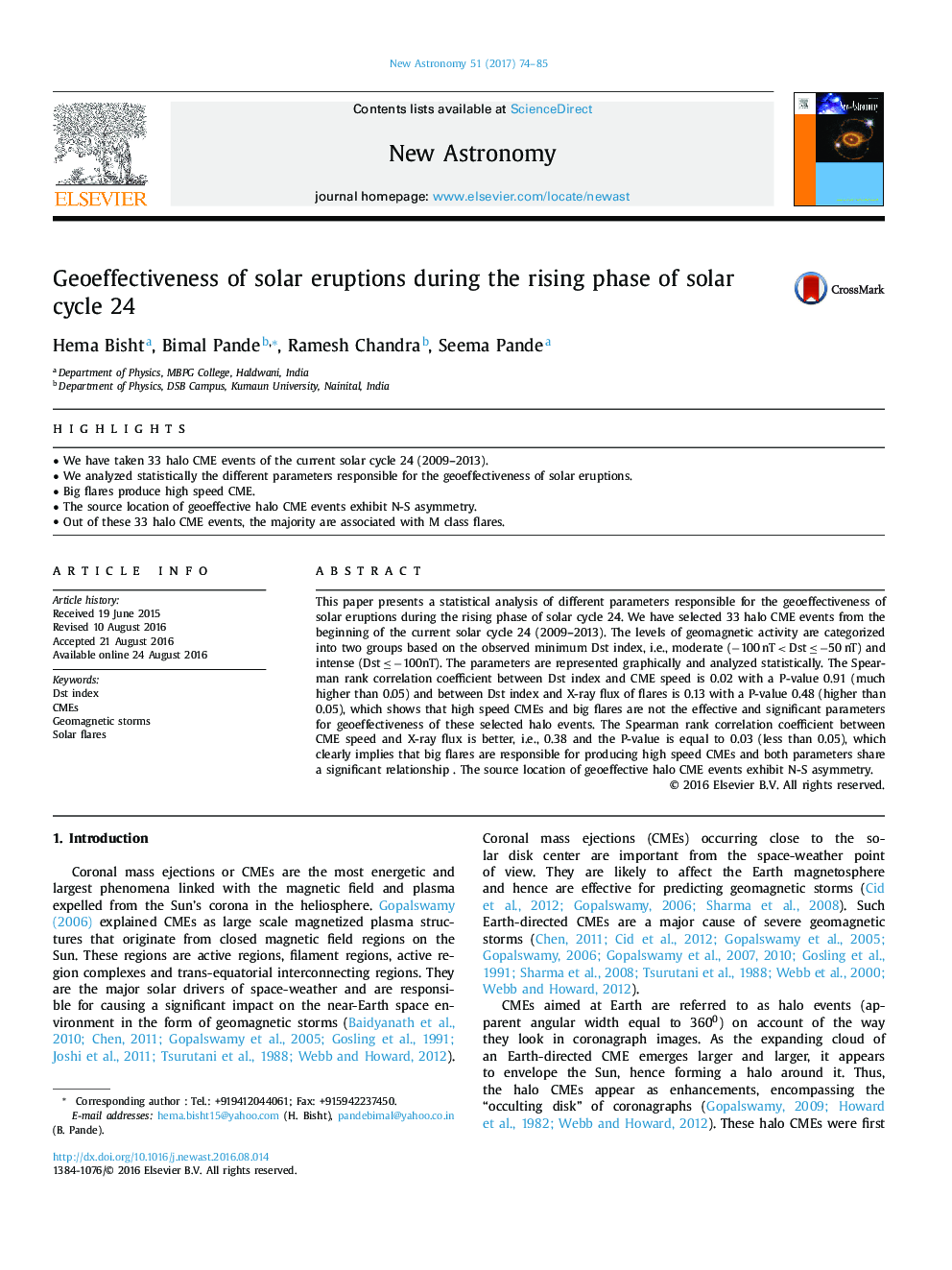| Article ID | Journal | Published Year | Pages | File Type |
|---|---|---|---|---|
| 1778677 | New Astronomy | 2017 | 12 Pages |
Abstract
This paper presents a statistical analysis of different parameters responsible for the geoeffectiveness of solar eruptions during the rising phase of solar cycle 24. We have selected 33 halo CME events from the beginning of the current solar cycle 24 (2009-2013). The levels of geomagnetic activity are categorized into two groups based on the observed minimum Dst index, i.e., moderate (â100 nT < Dst â¤Â â50 nT) and intense (Dst â¤Â â100nT). The parameters are represented graphically and analyzed statistically. The Spearman rank correlation coefficient between Dst index and CME speed is 0.02 with a P-value 0.91 (much higher than 0.05) and between Dst index and X-ray flux of flares is 0.13 with a P-value 0.48 (higher than 0.05), which shows that high speed CMEs and big flares are not the effective and significant parameters for geoeffectiveness of these selected halo events. The Spearman rank correlation coefficient between CME speed and X-ray flux is better, i.e., 0.38 and the P-value is equal to 0.03 (less than 0.05), which clearly implies that big flares are responsible for producing high speed CMEs and both parameters share a significant relationship . The source location of geoeffective halo CME events exhibit N-S asymmetry.
Related Topics
Physical Sciences and Engineering
Physics and Astronomy
Astronomy and Astrophysics
Authors
Hema Bisht, Bimal Pande, Ramesh Chandra, Seema Pande,
